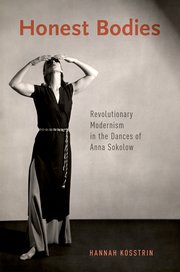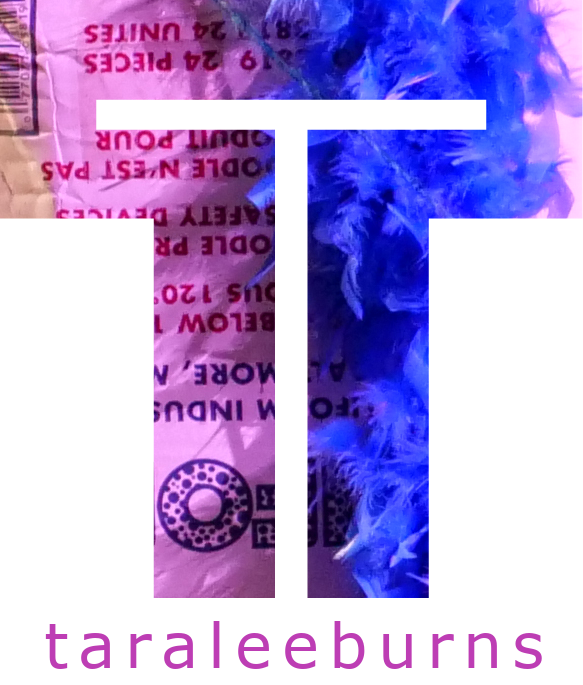 This summer we were tasked with reading “Honest Bodies: Revolutionary Modernism in the Dances of Anna Sokolow” and I was very excited to then sign up for a class with the author. How fun is it to take a course from the person who literally wrote the book on it! I am currently in Dr. Kosstrin’s Laban class and although this book is not required for that course it is wonderful to see two sides of someone you have just met. Below you can read my summary of her book for Graduate Seminar. There are so many grad words in there! 😉
This summer we were tasked with reading “Honest Bodies: Revolutionary Modernism in the Dances of Anna Sokolow” and I was very excited to then sign up for a class with the author. How fun is it to take a course from the person who literally wrote the book on it! I am currently in Dr. Kosstrin’s Laban class and although this book is not required for that course it is wonderful to see two sides of someone you have just met. Below you can read my summary of her book for Graduate Seminar. There are so many grad words in there! 😉
The Transnational Humanism in Honest Bodies: Revolutionary Modernism in the Dances of Anna Sokolow
Dr. Hannah Kosstrin’s Honest Bodies: Revolutionary Modernism in the Dances of Anna Sokolow examines Sokolow’s negotiation of politics, cultural heritage and modernism as a Jewish woman trained in American modern dance. Sokolow’s 1930s works embraced her classical training wielding proletarian values, her 1940s works were influenced by mexicanidad values adopted when in residence in Mexico, her 1950s works held the appearance of assimilation of universalism and Sokolow’s 1960s works were framed by her Israeli residency (Kosstrin 2017). Throughout her shifts in identity Anna Sokolow retained an innate ability to capture her viewers through vulnerable and honest performances with an activist’s heart which Kosstrin argues allowed her to create a transnational web of her political, cultural and American dance modernist aesthetic.
A historical perspective of Anna Sokolow’s choreographic blueprint, Honest Bodies highlights Jewish, communist, modernist and gender undertones in her choreographic work from the 1930s – 1960s. Each chapter dissects Sokolow’s work through a different cultural lens centering around the political climate of the time. Embodying the 1930s proletarian art movement of Revolutionary Modernism (Kosstrin 2017, 17), Sokolow’s work was rooted in dance modernism while embracing the international Left. Through her work with the Workers Dance League she was able to engage a larger audience with “Strange American Funeral” that “accused the capitalist establishment with the wrongful death of hundreds of miners and steel workers” (Kosstrin 2017, 42). Not only did Sokolow’s innate Jewish characteristics bleed into her dances but also a deep sense of gender politics and feminism. Her well known work, “Kaddish,” included both “traditional Jewish gestures for grief of beating the breast and tearing out one’s hair” (Kosstrin 2017, 133) and a costume including tefillin which is something only worn by Jewish men when praying. This duality of Jewish feminism and male representation resulted in an empowering feminist rebellion against societal gender roles (Kosstrin 2017, 135). Sokolow’s commitment to her beliefs was a source of contention and strength spanning generations.
In Chapter Three, “The Wandering Frog That Did Not Travel Well: Jewishness, Mexicanidad, and Ethnic Dance,” Kosstrin explores the challenges a 1940s Sokolow faced when presenting works with a perceived Otherness in New York City. Her 1950s dance, “Bullfighter,” was one of her only accepted mexican inspired works because it appeared “male-gendered” and “Euro-legible” (Kosstrin 2017, 124). Reviews by New York critics were evidence that they didn’t grasp the cultural, political and societal associations of Sokolow’s messages (Kosstrin 2017, 140). New York audiences were unfamiliar with mexican folklore and didn’t recognize the satire of Sokolow’s “The Wandering Frog” dubbing it “immature,” confusing “nonwhite content” with lesser and “abstracted (white) form” with quality (Kosstrin 2017, 123). In addition, critics viewed “Mexican Retablo,” Sokolow’s portrait of an “ethnic identity more marginalized than her own Jewishness,” as having an “odd whiteness” (Kosstrin 2017, 142). “Kaddish” was praised for its synthesis of Jewish milieu and abstract modernism, but was deprived proper choreographic criticism and classified as ethnic (Kosstrin 2017, 139-140). Sokolow’s 1940s work was identified as Other until consequences of the Second Red Scare forced her to shed her mexicanidad values and find a place in abstract modern universality (Kosstrin 2017, 156).
Through her political and social activism, Anna Sokolow transcended the position of Other by creating a transnational transparency. Kosstrin states, “Sokolow’s ethnicity connected her representationally to an Otherness wherein the West joins all the Rest together through racist assumptions that conflate non-western contexts despite cultural distinctions” (2017, 147). These distinctions are what Sokolow strived to separate and honor. At times marginalized, Sokolow’s work highlighted gender, cultural, political and social biases by performing and exposing the vulnerability and truth of humanity.
References
Kosstrin, Hannah. 2017. Honest Bodies: Revolutionary Modernism in the Dances of Anna Sokolow. New York: Oxford University Press.
